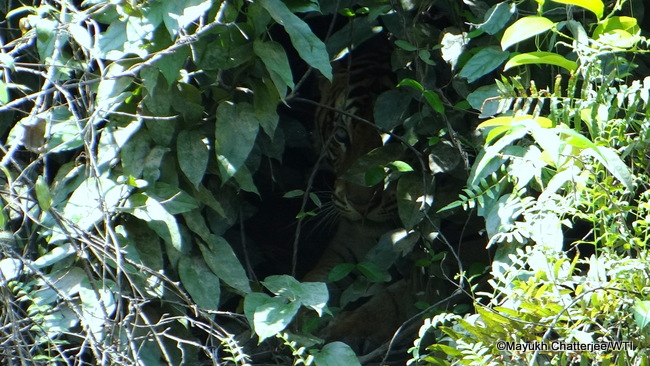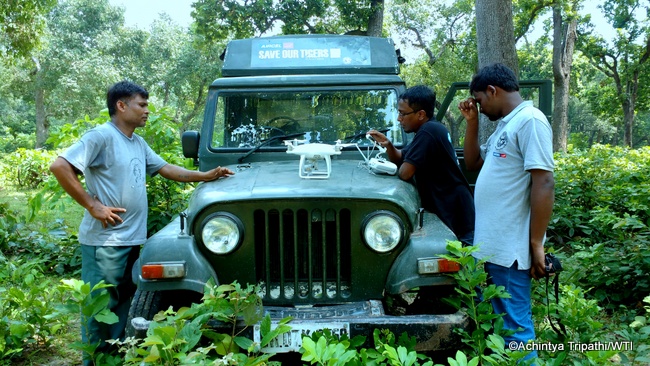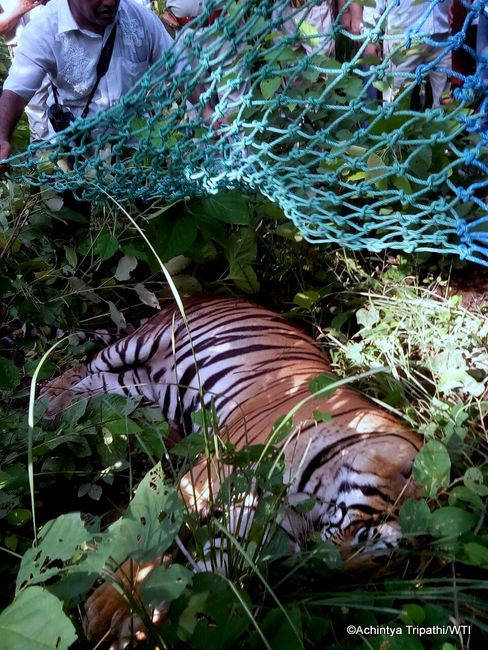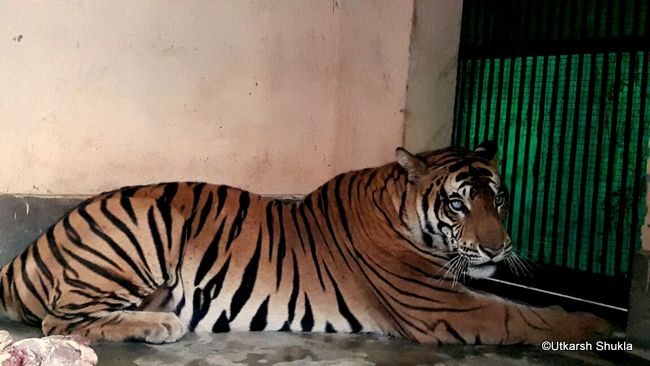The Man-eater of Mailani

The forest fringe at Chedipur where the tiger was known to prowl
The true seriousness of conflict between humans and wild tigers dawned on me only when the first human-tiger conflict scenario I have ever witnessed came to a close.
I saw how big and formidable the tiger was, how capable, even when completely sedated, of inciting awe and fear in the hundreds of people that surrounded it. I finally got a sense of the damage it could inflict, indeed the damage it had already inflicted over the past few months. Even when it was completely hidden from public view, in a closed transportation crate being driven along the Gola-Khuttar highway towards Lucknow, thousands of local people thronged the route for almost 10 to 12 km, hoping to catch a glimpse of the beast or even just some gossip about its capture. That is how magnificent a tiger is; that is its immense hold on the human imagination.
Saturday Night Fever
For me it all began on the afternoon of Saturday, August 27. After a long journey by train from Delhi to Shahjehanpur and by bus on to Khuttar, I had just reached the forest rest house at the South Kheri Forest Divison, Mailani Range, Uttar Pradesh.
On the train, half-dozing as I looked out of the window, I had dwelt on some of the shocking updates I had received on the ongoing situation. Three people had been attacked and killed, the last of these partially eaten, by a tiger between August 15 and 20. Another four deaths had previously been recorded in the same forest division since February, though these could not be unambiguously linked to the same tiger. Some reports had said that this tiger was fearless, that it would hold its ground even when faced with a mob of angry humans. To my excited mind it was morphing into something much more formidable than an ordinary wild tiger. Was it truly a man-eater, I wondered. And if it were, how difficult would it prove to catch?
 The tiger seen through the bushes during the capture attempt on August 29
The tiger seen through the bushes during the capture attempt on August 29
There were a lot of vehicles parked outside the Mailani rest house. Judging by their blue strobe lights I gathered that senior officials of the Forest Department had convened for a discussion on the issue. No sooner had I alighted than a small crowd of people poured out of the rest house and hurriedly got into their vehicles and rushed off. I jumped right back into the jeep with my colleague Karam Singh and we joined the convoy.
A half hour later we passed through a village where a massive crowd of villagers had gathered. This, Karam Singh told me, was Chedipur – where the last two killings had occurred. We stopped at the edge of the jungles of the Mailani range, just outside the village. I joined the rest of the Wildlife Trust of India (WTI) team which had rolled up in another vehicle.
Consisting of local volunteers from a village or villages experiencing a high frequency of conflict with big cat species, PRTs typically help to prevent unruly crowds from forming during a conflict or rescue situation.
Over the next hour the team explained the situation to some very senior Forest Department officials and planned the way forward. Then the entire bandwagon again rushed back to the Mailani rest house to continue the meeting. By evening, ‘Operation Mailani’ was on. Senior officials had named the tiger ‘Chedilal’, after Chedipur village. I was told that our team would work on three strategies simultaneously: locating the tiger and monitoring its movements; pacifying the local villagers and building support for the operation; and if an opportune moment struck, capturing the tiger.
The team had, in fact, already begun working with the villagers and had constituted what is called a Primary Response Team (PRT). Consisting of local volunteers from a village or villages experiencing a high frequency of conflict with big cat species, these PRTs typically help to prevent unruly crowds from forming during a conflict or rescue situation. They also educate other villagers on the precautionary measures to be taken in order to avoid confrontation with potentially dangerous wild animals, and help share local information quickly with the relevant authorities as well as the WTI team. With additional training they can help with the identification of signs such as pugmarks, patrolling and first aid.
Spotting the Stripes
A team from Lucknow Zoo came to the spot shortly thereafter. While they went into the forest on elephant back, tranquiliser guns at the ready, we headed along the forest edge, first scouting the area remotely using quadcopters then looking for signs of the tiger’s presence on foot. Although I’ve been blessed with several vehicle-mounted sightings of tigers in different parts of the country, this was so much more exciting because I had never encountered a tiger on foot – and this was a potential man-eater!
Mayukh and I took readings wherever we spotted pugmarks and other signs. A trap cage was also deployed, along with two buffalo calves tied to pegs, to lure and localise the prowling tiger. We then headed back to Chedipur and met the PRT members as well as several Forest Department personnel who were camping in the village. After a couple of hours we headed back to our camp.
 WTI’s MVS team prepares a quadcopter drone
WTI’s MVS team prepares a quadcopter drone











